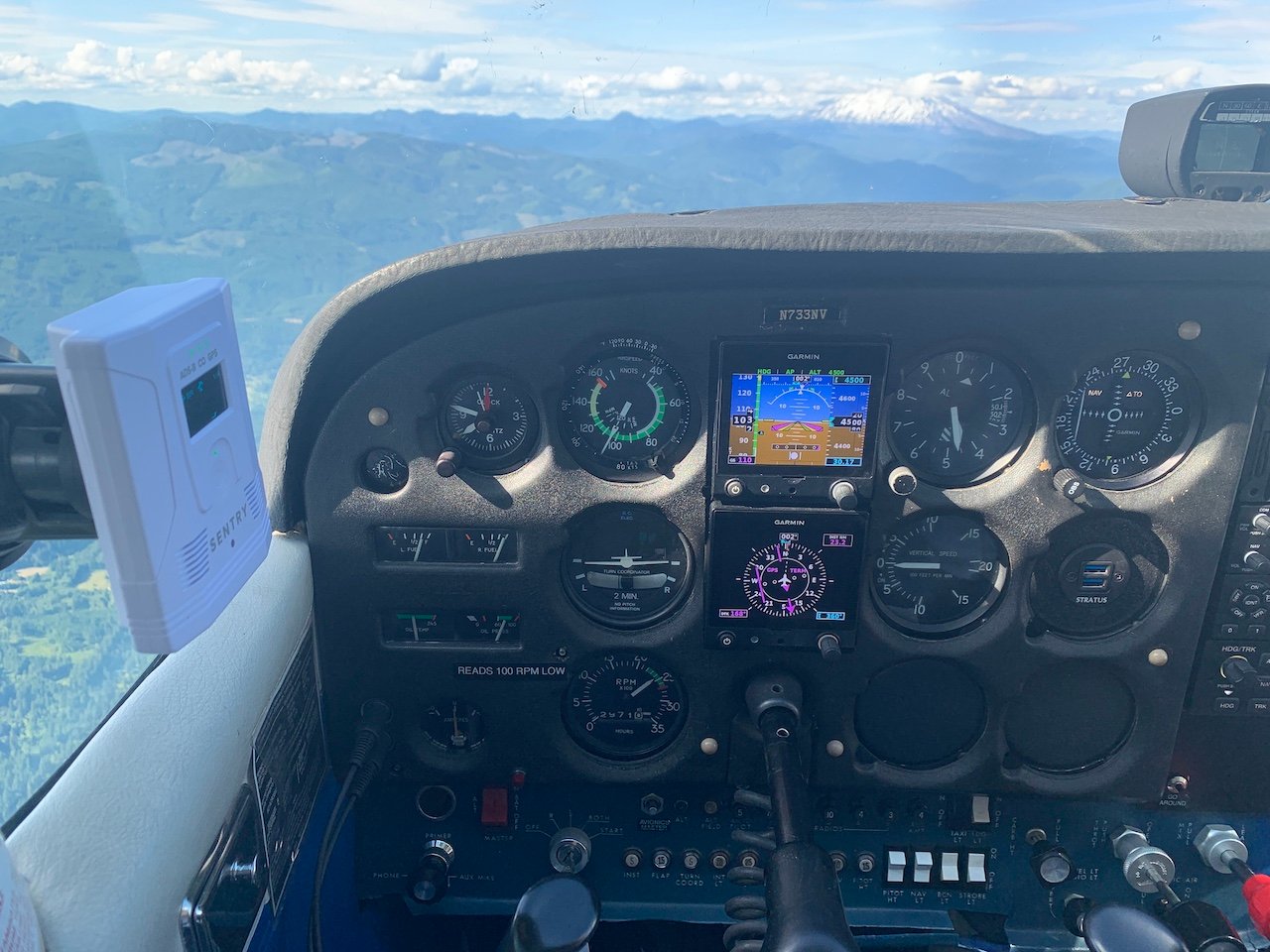Click Here to View This Page on Production Frontend
Click Here to Export Node Content
Click Here to View Printer-Friendly Version (Raw Backend)
Note: front-end display has links to styled print versions.
Content Node ID: 412905
Portable ADS-B receivers just keep getting better, and ForeFlight’s Sentry series is a good example of this trend. Since the FAA created the 978 MHz automatic dependent surveillance-broadcast (ADS-B) network and added ADS-B In to incentivize pilots to equip with ADS-B Out transponders, the capabilities of portable ADS-B In receivers have multiplied.
The latest Sentry Plus doesn’t change the basics of ADS-B In, but it adds features that make it a more useful device including battery life of more than 18 hours, a high-performance flight data recorder, g-meter, and automatic power on/off setting. The new features accompany a 1.3-inch OLED display on the Sentry Plus, which shows battery level, carbon monoxide (CO) status, acceleration (g-load), groundspeed, and GPS accuracy. The display also gives information on connectivity with smart devices, track log download progress, and firmware update status.
All the ADS-B In features are what most pilots expect to find on a modern receiver like the Sentry Plus, such as dual-band ADS-B In TIS-B traffic, free FIS-B weather, WAAS GPS, and attitude heading and reference system (AHRS) pitch and bank information.
Flying with Sentry Plus
I’ve been flying with the Sentry Plus for more than six months, and it’s a definite improvement on the earlier $599 Sentry, which is still available. Both have the CO sensor, dual-band ADS-B In, and AHRS, but the additional features resulted in the larger Sentry plus, which weighs almost twice as much and is roughly an inch wider and taller. One benefit of the increased size is a larger battery, and the Sentry Plus battery does last far longer, often not even needing to be recharged between flights. It should be noted that charging happens much faster when using the included USB-C cable, but any USB-C charger can be used to refresh the Sentry Plus’s battery. An auto power feature (set via the ForeFlight app) helps preserve battery power by automatically switching the Sentry Plus off when it is unplugged from a power source and detects a groundspeed lower than 10 knots for more than 45 seconds.
I like having a device that I can use to help monitor CO levels while flying in a piston-engine airplane, due to the increased risk of CO leaks into the cabin heating system. Both the original Sentry and the Plus have lights to warn of high CO levels, but the Plus’s display of CO status is even more helpful. It’s also handy to bring along while traveling and staying in hotels, to ensure the heater isn’t putting out CO.

The g-meter display is neat for seeing g loads from turbulence or how the load on the pitch axis changes during a turn, but it’s not something I look at much while hand-flying. It does add to the information saved in the track log, however, and the g-meter can also be displayed as an instrument in ForeFlight.
Track logging is automatically started each time the Sentry Plus is switched on. The flight data recorder stores track, altitude, pitch and bank, groundspeed, and g-load information. Flights can be viewed in ForeFlight’s track logs view or exported automatically for post-flight analysis in other programs such as CloudAhoy. Although it doesn’t include air data other than pressure altitude from the Sentry Plus’s altitude sensor, the track logs recorded are fairly accurate, within the limitations of the available recorded information. Both pressure altitude and GPS altitude are available, and users can receive alerts from ForeFlight’s automatic cabin pressure advisor when cabin altitude exceeds 12,000 or 25,000 feet.
Of course, the best feature of ADS-B In receivers is their ability to capture free weather information in the U.S. for display in the ForeFlight app. This includes animated regional and Conus Nexrad, Metars, TAFs, Airmets and Sigmets, pilot reports, textual winds and temperatures aloft, TFRs, notams, and status of special-use airspace.
For European pilots, the Plus includes antennas optimized for FLARM (traffic) reception. Users can add FLARM capability by purchasing a license via ForeFlight.
The Sentry Plus’s GPS receiver is accurate to within one meter and features both U.S. GPS and European Galileo sensors. If the U.S. GPS network is jammed, which happens fairly frequently during military testing, the receiver will automatically switch to the Galileo constellation.

The Sentry Plus retails for $799 and is designed to work only with ForeFlight. Sentry receivers were developed in collaboration with uAvionix, which also manufactures them.